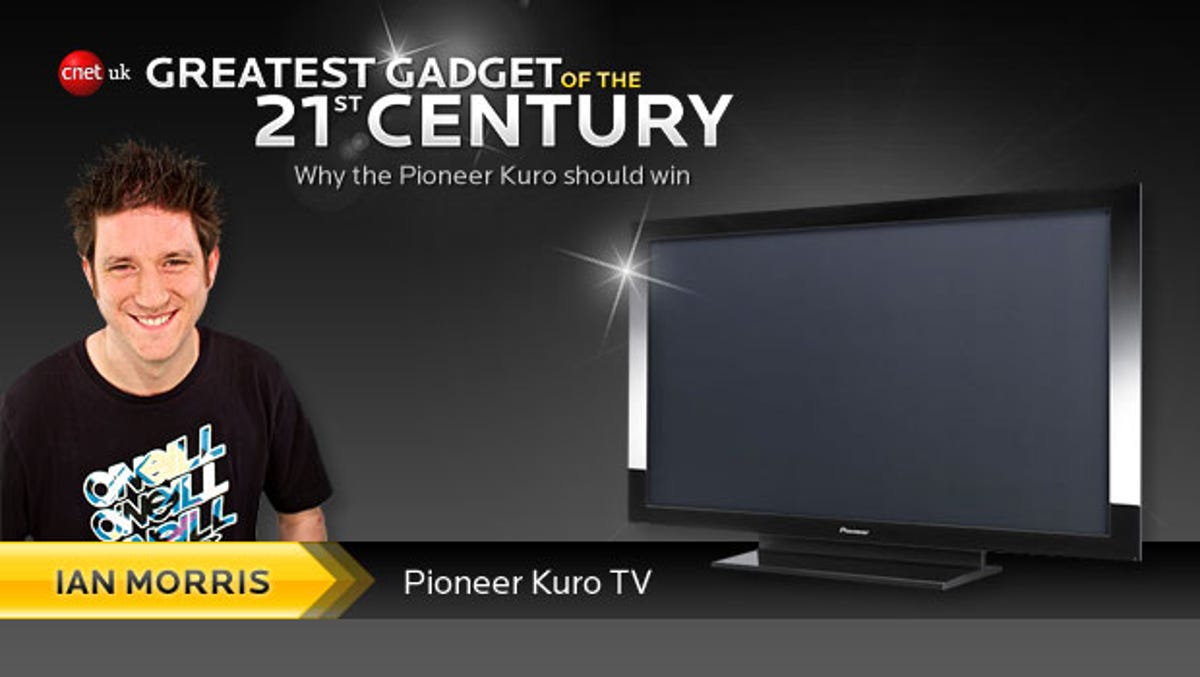
I’m a TV reviewer, so it stands to reason that I’d champion a television in our Greatest Gadget of the 21st Century tournament. But I’m not putting my vote behind the Pioneer Kuro PDP-LX5090 out of some sense of duty or loyalty — I’m doing so because it’s hands down the best piece of technology I’ve used since I started this job.
When we reviewed the Kuro under the old scoring system, we gave it 9.5 out of 10. With hindsight, I think it might have deserved the full 11 out of 10. I’ve never seen a TV that performs better than this Kuro, and I’ve seen pretty much every high-end TV that’s been launched since. Sure, some have come close, and OLED might change my stance once that technology becomes mainstream. But, to this day, no TV handles films and TV as well as the Kuro.
The picture quality is insanely good — movies explode out of the screen with a clarity that you’ll be lucky to see in the cinema. The black levels are the best of any TV — LED backlights are good, but not a patch on Pioneer’s plasma tech. Motion, colour and detail are all incredible. If you want the best-possible movie and TV experience, the PDP-LX5090 is still the best-performing telly we’ve seen. It’s brilliant for gaming and watching content from Freeview, Sky, Virgin and media streamers. I suspect that, if you connected it to a VHS player, it would even make tapes look watchable.
It’s not an exaggeration to say that this TV changed the world of flat-panel TVs. Nothing before managed to handle black levels in the way the Kuro did. But, although famous for its contrast ratio, it was more than a one-trick pony. Its remote control felt like a premium piece of equipment. It had a generous number of inputs for all sorts of devices. Its styling was as cool as a cucumber, and it still looks amazing in today’s world of size-zero TVs that you can almost lift with one hand.
Was the Kuro PDP-LX5090 perfect? No, it was not. The menus were tough to navigate and quite ugly (although Pioneer fixed these problems with later Kuro models, and the company would have continued to deliver improved user interfaces if it hadn’t pulled out of the TV market). The TV was also fairly expensive. But, compared to today’s 3D LED TVs, it actually stacked up well. At its cheapest, the 50-inch Kuro cost £1,800 and, at its most expensive, it cost about £2,300. They’re similar prices to those which people are paying now for high-end Sony and Samsung 3D TVs.
The fact is that the Kuro is the best gadget of the past ten years, and it doesn’t look like it’s going to be bettered any time soon. You can now buy TVs with more features, but only one thing really matters to a serious home-cinema nut: image quality. Only the Kuro boasts pictures that have exploded our socks into a thousand fragments.
- Agree? Disagree? Let us know in the comments section below. Then make sure to head over to our Greatest Gadget of the 21st Century tournament page to vote for your champion.
- Every time you vote, you’ll be entered into a draw to win an Arcam rCube, a BlackBerry Bold 9700, a Sony Ericsson Xperia X10 and a MiFi from Three or one of ten Idapt i4 multi-gadget chargers.




